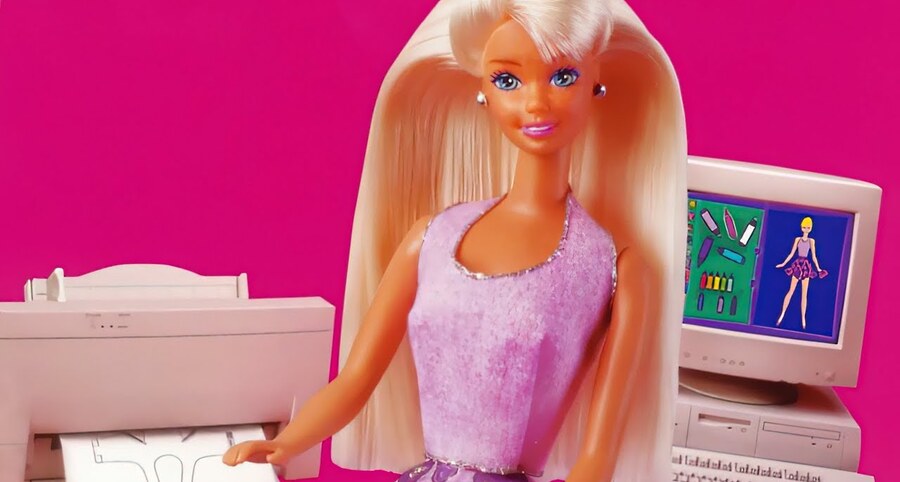
Earlier this year, Mary Kenney, the author of the book "Gamer Girls: 25 Women Who Built The Video Game Industry", took to Twitter to share a surprising statistic about Barbie: Fashion Designer, the Barbie dress-up game that Digital Domain released in 1996 for Windows and Macintosh computers. In the tweet, she claimed the piece of software outpaced Doom in its first year of sales, which inevitably drew a lot of skepticism from a certain audience of (mostly male) gamers online.
Kenney has now shared the source for her claim in a new article, which was published earlier this week on Harpers Bazaar's website. In it, she points to a Wall Street Journal article from October 1998 where the author Evan Gahr says the following about the game:
"The interactive game, in which girls select Barbie's clothes, proved an overnight success, selling more than 500,000 copies by the end of the year (1996)."
When you compare that with Doom, which only managed to shift 140,000 copies in the same period of time during its first year (according to the Fort Worth Star-Telegram's Leslie Gornstein), it's clear that Kenney was right to make the assertion.
This is obviously a significant achievement and a sign of the game's success, but something that's even more remarkable about this feat — at least in our eyes — is that a child was actually the one responsible for creating the original concept for Barbie Fashion Designer. E.J. Rifkin was the young daughter of Andy Rifkin, the future senior vice president of Mattel Media. She's credited twice in the game's credits on Moby Games, as both the person who came up with the initial concept and a consultant on the project.
Her father Andy Rifkin told Time Extension about how she came up with the idea earlier this year:
"The idea was that my daughter wanted to make clothes for Barbie on the computer. So I invented this product, I developed it with her, and I took it to Mattel to sell it to them. And they looked at me like I was crazy, but the president was willing to take a chance on it.
"I think one of the things with Mattel is, at that point, is they knew the girl’s software market was underserved and even the young boys were too, with like the Hot Wheels brands. So they decided to take a flier and see where we could go. We were autonomous at [Mattel Media] and nobody really made us fit into the Mattel structure for toys, so they gave us a lot of freedom to create new things.
"As a result, we did really well. I think we were like $400 million dollars in two years or three years. We were serving market spaces where there was no product. Nobody could make good stuff for girls. Nobody could make stuff for young boys. So we wound up doing really well with it."
If you are unfamiliar with Barbie: Fashion Designer, it was essentially a piece of software for computers that allowed users to style Barbie in different clothes, before modelling their outfits on a 3D runway. Unlike Hi-Tech Expressions' bizarre 1991 Barbie game for the NES, there were no angry pieces of sports equipment to battle or ticked-off pizza ovens to square off against this time around. Instead, Mattel Media developed a much more conventional dress-up game that hearkened back to the first Barbie on Commodore 64.
